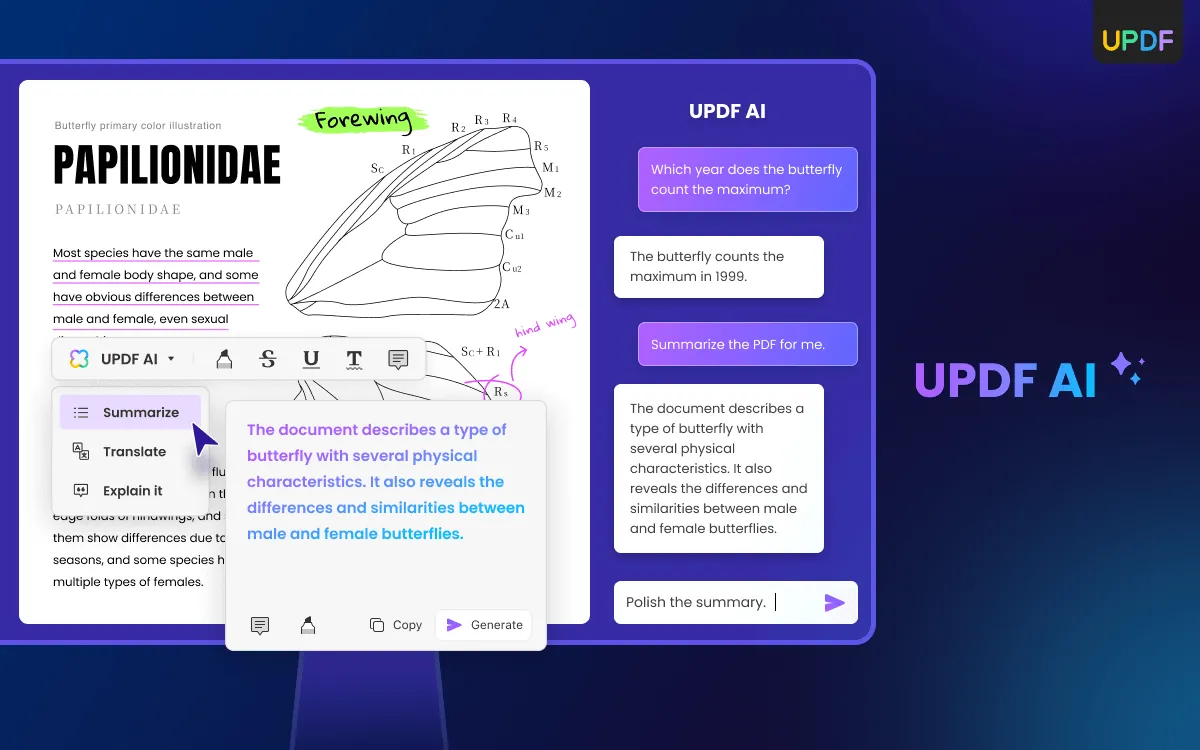
In today’s digital age, Portable Document Format (PDF) has become ubiquitous for sharing documents across different platforms while maintaining their original formatting. From legal contracts to academic papers, PDFs ensure consistency and security in document distribution. However, traditional methods of interacting with PDFs can be limiting, often requiring specialized software and skills. This is where AI-powered tools step in, revolutionizing how we interact with PDF documents.
Understanding PDF Interaction
PDF interaction encompasses the ability to effectively view, edit, annotate, and manage PDF documents. For many users, the primary challenge lies in the static nature of PDFs—they are often seen as read-only documents that are difficult to manipulate without the right tools. This limitation becomes particularly evident when users need to extract information, edit content, or collaborate on documents in real-time.
What constitutes effective PDF interaction?
Effective PDF interaction involves seamless navigation, annotation, editing, and extraction capabilities. Modern users expect tools that not only display PDF content accurately but also allow them to interact with it as they would with a physical document—highlighting text, adding comments, filling forms, and even converting PDFs into editable formats.
Challenges users face with traditional PDF handling
Traditional PDF handling often requires separate software for viewing, editing, and converting PDFs. This fragmented approach can lead to compatibility issues, workflow interruptions, and increased learning curves for users. Moreover, without advanced features like text recognition (OCR) or collaborative tools, traditional PDFs can hinder productivity and collaboration efforts.
Key Features to Look for in AI Tools
When selecting Best AI tools for PDF interaction, several key features can significantly enhance user experience and productivity. These features include Optical Character Recognition (OCR), annotation tools, compatibility across devices and operating systems, security features, and integration capabilities with other software solutions.
OCR (Optical Character Recognition) capabilities
AI-powered OCR technology enables users to convert scanned PDFs and images into editable and searchable text. This feature is essential for extracting information from documents such as receipts, contracts, or old manuscripts that exist only in hard copy form. By recognizing text within images, OCR transforms static PDFs into dynamic documents that can be edited, searched, and analyzed.
Annotation and editing functionalities
Advanced AI tools offer robust annotation and editing functionalities that allow users to mark up PDFs with comments, highlights, stamps, and signatures. These tools simulate the experience of working with physical documents, enabling collaboration and feedback in real-time. Users can annotate directly on the PDF, making revisions or adding notes without altering the original document structure.
Compatibility with various devices and operating systems
In today’s mobile-centric world, compatibility across devices and operating systems is crucial for seamless workflow integration. AI-powered PDF tools should be accessible on desktop computers, tablets, and smartphones, supporting both major operating systems like Windows, macOS, iOS, and Android. This versatility ensures that users can access and work on PDF documents from any device, anytime, anywhere.
Top AI Tools for PDF Interaction
Adobe Acrobat DC
Adobe Acrobat DC is a comprehensive tool known for its powerful PDF editing, conversion, and collaboration features. It integrates AI for smart document handling, including OCR and advanced editing capabilities. Users can annotate PDFs, fill forms, and securely share documents across platforms.
Foxit PhantomPDF
Foxit PhantomPDF offers a robust set of AI-driven features tailored for business users. It supports OCR for converting scanned documents into searchable and editable files. The tool excels in document security, PDF creation, and collaborative annotation.
Nitro Pro
Nitro Pro combines AI technology with intuitive design to streamline PDF tasks. It features OCR for transforming scanned documents into editable text, along with powerful editing tools. Nitro Pro supports cloud integration for seamless document sharing and collaboration.
Use Cases and Benefits
AI-powered PDF tools offer numerous benefits:
Practical examples of how these tools can be used
- Enhanced Productivity: Users can quickly convert, edit, and share PDFs, reducing manual tasks.
- Improved Collaboration: Tools facilitate real-time comments, annotations, and version control, enhancing teamwork.
- Accessibility: AI tools make PDF content searchable and accessible to users with disabilities, improving inclusivity.
Benefits such as time savings, improved collaboration, and accessibility
- Time Savings: Automated tasks like OCR and batch processing save time traditionally spent on manual document handling.
- Collaboration: Cloud integration allows teams to work on documents simultaneously, enhancing productivity.
- Accessibility: AI tools enable text-to-speech conversion and other accessibility features, making documents usable for all users.
Conclusion:
AI tools revolutionize how we interact with PDF documents by offering advanced capabilities for editing, collaboration, and accessibility. As technology continues to evolve, these tools will play a pivotal role in simplifying document management and enhancing productivity across industries. Looking ahead, expect further innovations in AI-driven PDF solutions, catering to diverse user needs and improving overall efficiency in document handling.

